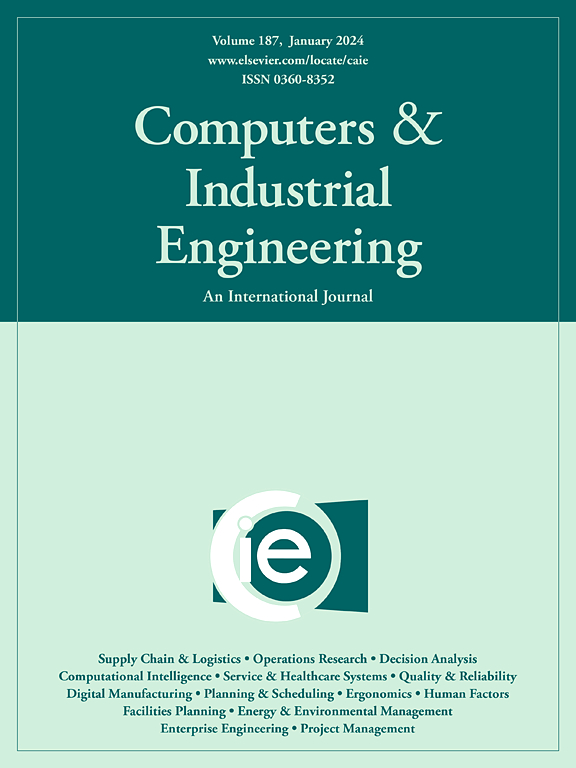针对缓冲区分配问题的灵活生产车间空间-时间特征集成生产-物流预测方法
IF 6.7
1区 工程技术
Q1 COMPUTER SCIENCE, INTERDISCIPLINARY APPLICATIONS
引用次数: 0
摘要
本文章由计算机程序翻译,如有差异,请以英文原文为准。
A Production-Logistics prediction method integrating Spatial-Temporal features in flexible production workshop for buffer allocation problem
To meet the demands of personalized manufacturing, characterized by customized production with varying batch sizes, logistics equipment such as Automated Guided Vehicles (AGVs) play a critical role in the manufacturing process. However, the distribution of multiple batches is influenced by various factors, with buffer zone capacity allocation emerging as a key challenge. Optimizing buffer zone allocation necessitates a thorough consideration of both spatial characteristics (e.g., shop floor layout and workpiece pathways) and temporal characteristics (e.g., the sequence of material distribution) to enhance resource allocation, reduce bottlenecks, and improve efficiency. This research proposes a novel logistics prediction method for flexible production plants, utilizing a graph attention network that integrates spatial–temporal features. The method first applies a multi-head attention mechanism to capture significant temporal information. Then, a graph convolutional network is employed to model the workshop layout topology and workpiece processing paths, thereby extracting the spatial features of logistics. This spatial information is sequentially processed through a gated recurrent unit and the multi-head attention mechanism to capture the dynamic temporal features of logistics. The proposed model is ultimately employed to predict production logistics in a flexible manufacturing workshop. The experimental results of the MA-T-GCN (Multi-head Attention Temporal Graph Convolution Network) model on production logistics prediction demonstrate an improvement over the best-performing baseline methods on standard benchmark metrics under varying experimental conditions.
求助全文
通过发布文献求助,成功后即可免费获取论文全文。
去求助
来源期刊

Computers & Industrial Engineering
工程技术-工程:工业
CiteScore
12.70
自引率
12.70%
发文量
794
审稿时长
10.6 months
期刊介绍:
Computers & Industrial Engineering (CAIE) is dedicated to researchers, educators, and practitioners in industrial engineering and related fields. Pioneering the integration of computers in research, education, and practice, industrial engineering has evolved to make computers and electronic communication integral to its domain. CAIE publishes original contributions focusing on the development of novel computerized methodologies to address industrial engineering problems. It also highlights the applications of these methodologies to issues within the broader industrial engineering and associated communities. The journal actively encourages submissions that push the boundaries of fundamental theories and concepts in industrial engineering techniques.
 求助内容:
求助内容: 应助结果提醒方式:
应助结果提醒方式:


